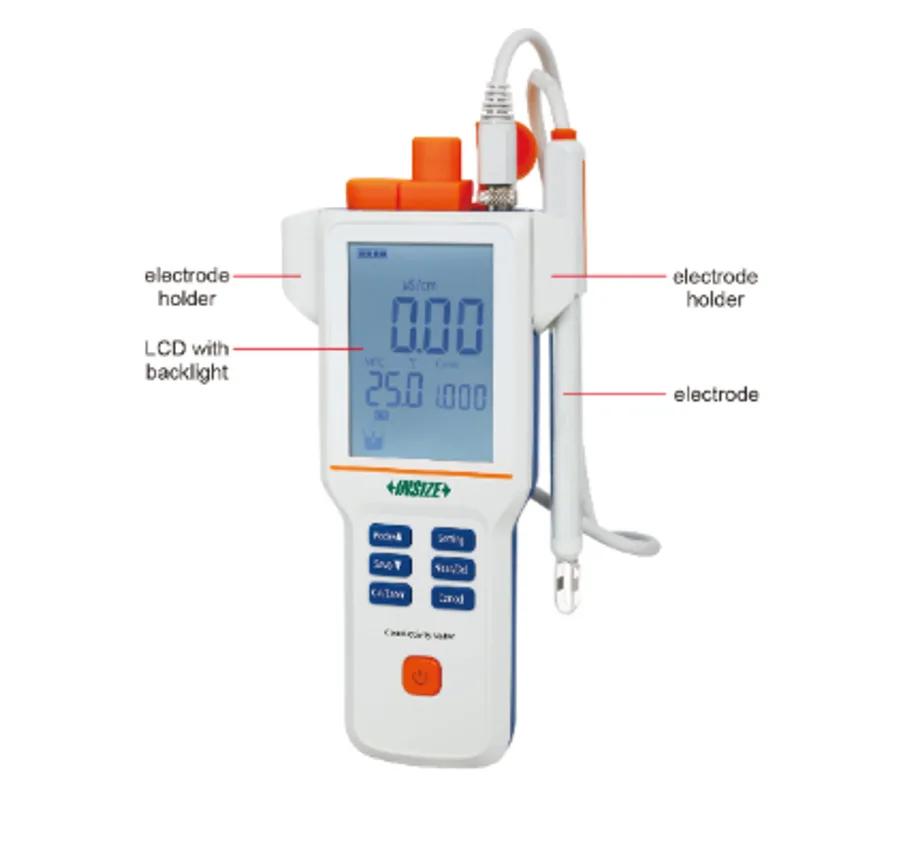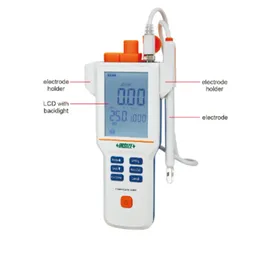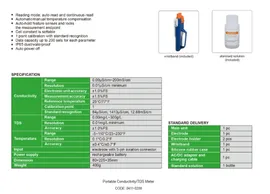Insize Portable Conductivity/TDS Meter 0411-0200
Insize Portable Conductivity/TDS Meter 0411-0200
$0
Product Code: 00785
Model No - 0411-0200
Temperature Range - -5~110°C/23~230°F
Temperature Accuracy - ±0.4°C/±0.7°F
Dimension - 80x225x35 mm
Weight - 400 g
Temperature Resolution - 0.1°C/0.2°F
Calibration - Point: 1
Type of Product - Portable TDS Meter
Power Supply - Rechargeable Battery
Accuracy- ±1.0% FS
Country of Origin - India
Resolution- 0.01 µS/cm minimum
Measurement Range - Conductivity: 0.00 µS/cm to 200 mS/cm
Input - Electrode with 5 Pin Aviation Connector
Name of Manufacturer/Packer/Importer - INSIZE CO., LTD.
Insize 0.00 µS/cm to 200 mS/cm Range Portable Conductivity/TDS Meter, 0411-0200 is a handheld electronic device used to measure the electrical conductivity of a solution or the concentration of dissolved solids in a liquid. These meters are commonly used in various fields, including environmental monitoring, water quality analysis, agriculture, aquaculture, and laboratory research. Here's an overview of how a portable conductivity/TDS meter works and its key features:
How it Works:
Measurement Principle: The meter works based on the electrical conductivity of a solution. Pure water is a poor conductor of electricity, but when it contains ions (charged particles) from dissolved solids, it becomes a better conductor.
Probe and Electrodes: The meter is equipped with a probe or sensor that typically has two or four electrodes. When immersed in the liquid, these electrodes come into contact with the solution and measure its electrical conductivity.
Electrical Circuit: The meter generates a small electrical current that passes through the solution between the electrodes. The conductivity of the solution affects the flow of this current.
Measurement Display: The meter's display provides readings in units of electrical conductivity (usually in micro siemens per centimeter, µS/cm) or TDS (usually in parts per million, ppm) based on the electrical conductivity measurement.
Key Features:
Portability: Portable conductivity/TDS meters are designed to be compact and lightweight, making them easy to carry and use in the field.
Accuracy: These meters provide accurate measurements of electrical conductivity and TDS, helping users assess water quality or solution concentration with precision.
Measurement Range: They often have a wide measurement range to accommodate various sample types, from very low conductivity (e.g., pure water) to highly conductive solutions.
Automatic Temperature Compensation (ATC): Many models include ATC, which adjusts the conductivity/TDS readings based on the sample's temperature to ensure accurate results.
Calibration: Users can calibrate the meter using standard solutions with known conductivity or TDS values to maintain accuracy.
Data Logging: Some advanced models offer data logging capabilities, allowing users to record and store measurement data for later analysis.
Waterproof and Dustproof: Certain models are designed to be water-resistant or waterproof, making them suitable for fieldwork in wet conditions.
Battery Operation: Portable meters are typically battery-operated, ensuring they can be used in remote locations without access to power sources.
Display: They come with a clear and easy-to-read LCD or digital display.
In summary, a portable conductivity/TDS meter is a valuable tool for professionals and researchers who need to assess the quality of water or measure the concentration of dissolved solids in a liquid. Its portability, accuracy, and additional features make it an essential instrument in various industries where water quality and solution analysis are critical.





